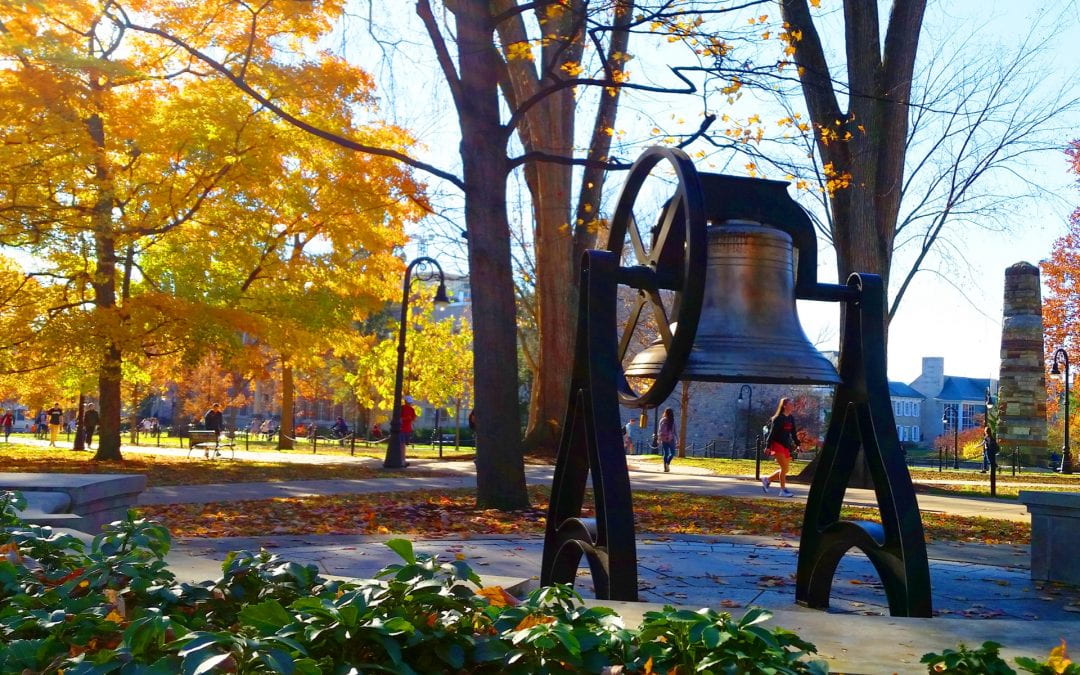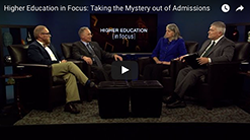President Barron has invited Damon Sims, vice president for Student Affairs, to pen a guest blog post expressing Penn State’s commitment to combating sexual misconduct, and to share information on actions the University has taken to address this serious issue and offer resources and support for victims of sexual assault and harassment.
Penn State has long been committed to doing all it reasonably can to create and sustain a safe and supportive campus environment for all who study, work and visit here. That commitment embraces academic and nonacademic activities alike. It extends beyond campus boundaries to partnerships with the communities the University inhabits. It is half prevention and half response, and it involves collaboration and a shared sense of purpose among various parties both within the University and beyond.
This commitment to safety and support is perhaps nowhere more important than in our actions to address sexual misconduct. The unique impacts of sexual assault and harassment, their unusual and long-lasting damage, the centuries-old social history of gender-based discrimination, and our commitment to equity combine to compel the University’s deep determination to mitigate these harms.
Despite the profound progress made since the advent of Title IX, the #Me Too movement and related activism in recent years demonstrate that important work remains. The seeming intractability of sexual misconduct throughout our society has given rise to an impatience with progress and a sense that more must be done, and it must be done now. Students at various college campuses across the country have raised their voices this fall to condemn sexual assault and advocate for greater urgency addressing the issue. Several groups at Penn State, including the Schreyer Gender Equity Coalition and Students Against Sexist Violence, have joined this growing chorus.
The University administration understands this impatience and shares it. Even as we acknowledge progress made in the form of better and broader administrative structures and programs designed to effectively address these issues, we share frustration that sexual misconduct persists. Even as we point to substantial University resources and leadership committed to these purposes, including a relatively new Title IX unit within Affirmative Action and a separate, but related, Office of Sexual Misconduct Prevention and Response focused acutely on these concerns, we acknowledge that sexual assault and harassment still vex our community.
But this heightened activism and impatience with progress are not the result of increased numbers of rapes or sexual assaults at Penn State, where the numbers this year are generally tracking the patterns seen in pre-COVID years. Through September, there have been 44 reported rapes and sexual assaults at University Park in 2021. This number compares to 113 and 102 for all of 2019 and 2018, respectively. For the first six weeks of the fall semester alone, 20 rapes and sexual assaults have been reported at University Park. That number through the same six-week period was nine during last year’s unique remote learning experience, but the number was 20 in 2019 and 15 in 2018.
Of course, we know that for far too long sexual misconduct offenses have been greatly underreported. Among our many intentional efforts on this front in recent years has been an earnest attempt to strongly encourage those harmed in these ways to report the offenses they have endured. It is impossible to know what portion of reported cases actually result from a greater openness to report and the increased means for reporting. But our goal must remain the same and lofty regardless — to end sexual assault and harassment at Penn State and bring cases to zero.
The timely warnings we issue as required under federal law may or may not be helpful to this cause. They are intended to alert the campus community to the occurrence of a possible crime, heighten awareness, and aid in prevention. But they have been perceived by some among us as more than that, and they can be misleading. It is useful to understand that timely warnings are not an official source of data when calculating sexual assaults occurring on campus. These warnings are issued only when certain factors are present, including suspicion of a serious safety or security concern on or near campus that may persist or be repeated. These warnings are one means of addressing these issues, but only one, and they alone are not the best indicator of the current campus climate regarding sexual misconduct.
Because we know the importance of our work to minimize, if not eliminate, this problem among us, and we understand its seeming intractability, a range of interventions meant to improve upon the progress made has been deployed and includes a mix of additional strategies. For example, the energy and passion found in renewed student activism are being channeled toward constructive, tangible outcomes through a standing student advisory committee on this topic. These students and others will advise our Title IX and Sexual Misconduct Prevention and Response offices, as well as the Student Affairs Research and Assessment Office, which administers the sexual misconduct climate survey at Penn State, ensuring representation of the student perspective in this meaningful work. In mid-October, student focus groups will gather with the staff leading related initiatives to discuss the Sexual Misconduct Climate Survey. And later this fall, a town hall moderated by President Barron will reflect on progress made and progress yet needed in our collective effort to end sexual misconduct at Penn State.
These steps will add to the collection of programs and processes already in place. Our work to prevent sexual misconduct begins with new students and their orientation to the University. We require all first-year students to complete a learning module on sexual assault titled “Penn State Safe & Aware,” before they may enroll, giving them the tools to recognize risks and develop skills that encourage their safety. University Police offers a free community education program on sexual assault awareness and prevention, which students and employees alike may request. The Gender Equity Center and the Office of Sexual Misconduct Prevention and Response offer prevention education, awareness and other events throughout the year.
Reporting sexual misconduct is never easy, but we have in place multiple mechanisms to ease the process for survivors and others. Our reporting system includes in-person, phone and online means, and accommodates anonymous reporting. The Gender Equity Center offers confidential support and advocacy and is available to helps survivors navigate the reporting process. This is not easy for any survivor — the investigators in the Office of Sexual Misconduct Prevention and Response are specifically trained in trauma-informed practices to handle cases with the sensitivity required.
At its core, though, our determination to end sexual assault and harassment involves each of us — the University’s students, faculty and staff, who comprise the citizens of this wonderful, exciting and meaningful learning community. The University administration must establish the necessary programs and services, ensure suitable staff and resources, enact the right policies and practices, and enforce expectations. But every student, as well as every faculty and staff member, shares a duty to one another to live their lives in ways that give no space for sexual misconduct of any kind. There is no one answer to this vexing, troubling problem, which often involves interactions between adults in private settings. The answer will be found only by way of persistence and determination, and only if we join together to insist on a community built on mutual respect.
This problem will not be solved overnight no matter how determined we may be. But the University administration remains committed to the hard work required through education, prevention and enforcement. We ask that all among us recommit themselves to this same purpose, so that ours becomes and remains a University community that is safe and supportive to all who learn, work or visit here.





